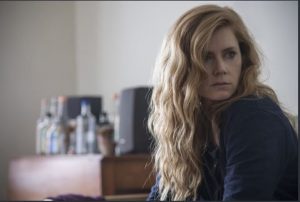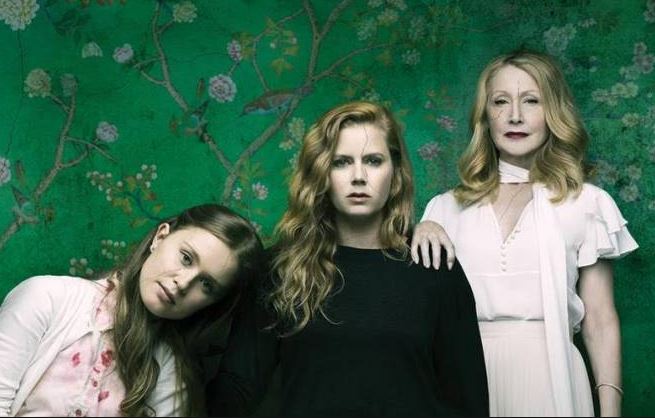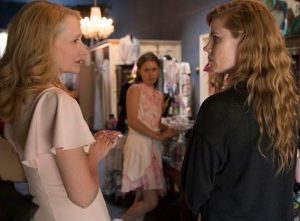After the success of films such as Gone Girl, and The Girl on the Train, as well as last year’s series Big Little Lies, it seems that dark, women-driven dramas are at the height of their popularity. Though dramas headlined by women have always existed, these recent releases have women as drivers behind the scenes, as well. They are the authors, the producers, and the directors of their own stories. What does a crime film or a thriller look like when women aren’t just the objects of the gaze and the crime?
Created by Marti Noxon, Sharp Objects is the TV adaptation of Gillian Flynn’s first novel. It stars Amy Adams as Camille Preaker, a reporter with a troubled past, who has returned home to Wind Gap, Missouri to investigate the disappearance of a young girl. Her editor suspects the disappearance may be related to the murder of another girl in the town the previous year.
During her stay in Wind Gap, Camille is forced to confront the dynamics that drove her away from the town years before: her relationship with her former classmates, her half-sister Amma (Eliza Scanlen), and above all, her mother Adora (played by the always astounding Patricia Clarkson).
In its premiere episode “Vanish,” Sharp Objects establishes the tone for the series: it is dark and grim Southern Gothic. As Flynn herself has emphasized during the recent publicity tour, the series is often compared to Big Little Lies, but it is closer in tone to True Detective. Camille is immediately marked as different from the people of her hometown by the poster of Barack Obama in her apartment (the town has Bush posters). One of the recurring themes in Gillian Flynn’s Gone Girl was the main character’s horror at having to leave the city for the country. In Sharp Objects, this theme is much more pronounced. For many people, the norms of country life are a kind of hell even when there are no dead bodies in sight. This is what sets Southern Gothic apart: it rejects the prevalent wholesome tropes about salt-of-the-earth types that populate that part of the country. When explored with a more critical eye, the manners of rural America feel oppressive and corrosive. Someone like Camille would be unhappy in her hometown even if her family were a happy one.
Of course, Camille’s family life is not a happy one. They are haunted by the loss of Camille’s sister Marian years before. Marian was a sickly girl, and the trauma of her passing is ever-present for her mother and for Camille. After Camille moved away, Adora gave birth to another girl, Amma. The curious Amma never knew either of her sisters and is intrigued by the return of Camille. Meanwhile, as Camille starts to ask questions in the tight-knit community of Wind Gap, her mother Adora feels personally humiliated by the sordid nature of Camille’s job.
“Vanish” is an episode that attempts to do a lot, and largely succeeds. The series makes it clear that there are tensions in Wind Gap that predate the murders, a rot within the community that drove Camille away. Every interaction that Camille has is strained, even with the friendlier residents. As Camille, Amy Adams conveys the weariness of returning home to a place she never wanted to see again. Her Camille drinks to get through life, and her unhappiness has followed her out of town, as her scarred body can attest. There is a sense that while she may have gotten away from Wind Gap, 
Despite this one issue, Sharp Objects has gotten off to a strong start. Its serious and somber tone might turn off fans of the more satirical Big Little Lies. Even Gone Girl had a pitch-black kind of humor. On the other hand, Sharp Objects‘ unironic embrace of its own grimness accentuates the dread pervading the whole town. I look forward to getting to know the residents and the mysteries of Wind Gap in coming weeks.

